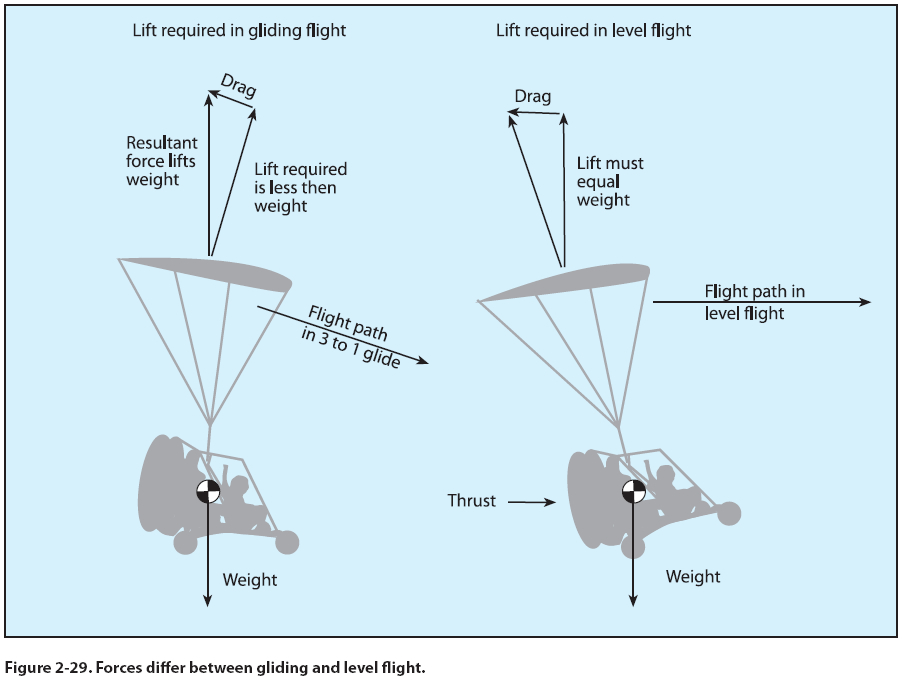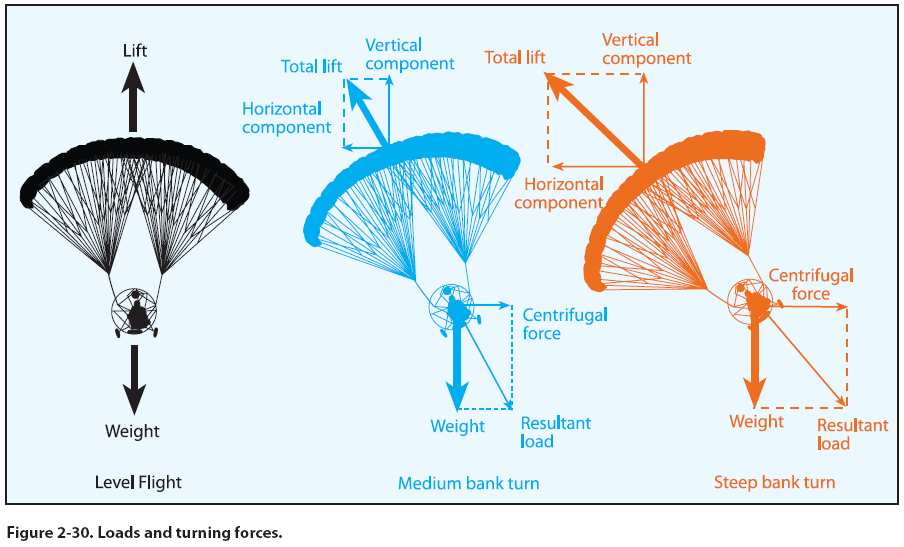Chapter 2 - Aerodynamics of Flight
Turning Effect
Torque is a reaction to the mass of the turning propeller.
If the propeller is turning to the right, the reaction
is for the cart to want to turn to the left. Therefore, a
right turn is sometimes designed into the PPC system
to counteract the torque.
PPC manufacturers compensate for this with various
designs:
1. Dual (counter-spinning) propellers. This is an
ideal way to counter prop torque, but counterrotating
gearboxes are complicated, more
expensive, and weigh more.
2. Different riser lengths. On a clockwise-turning
propeller, the left riser is longer than the right.
3. Swivel the wing attachment on a tilt bar above
the cart.
4. Adjust the PPC frame (longer on the left, shorter
on the right) to compensate for the engine torque
(for a clockwise spinning prop).
Additionally, P-factor, as discussed in the Pilot’s
Handbook of Aeronautical Knowledge can be a factor,
producing a left turn if the nose of the cart is too high through improper CG balance of the PPC. Rotating
propeller gyroscopic action can also produce turning
tendencies if a force is applied which would deflect
the propeller from its existing plane of rotation.
There is no corkscrew effect of the slipstream on a
PPC because it does not have a tail in the propeller
prop blast.
Weight, Load and Speed Changes
Greater load factor creates increases in speed. For unaccelerated
and stabilized flight there are only slight
variations in speed for different flight conditions.
[Figure 2-29] For an 800-pound PPC in gliding flight,
both the lift and drag components support the weight
of the PPC (lift is 759 pounds, and drag is 252 pounds,
with the resultant 800 pounds vertical force).

In level flight, the PPC does not have the vertical
component of total drag to support the weight so additional
lift must be generated through speed or angle
of attack increases.
The numbers are small and difficult to measure or
feel so the industry rule of thumb is to assume the
PPC flies at a constant speed and angle of attack with
changes in throttle. However, increased load (weight)
and load factor has a significant effect on speed. [Figure
2-30]

As discussed in Chapter 2 of the Pilot’s Handbook of
Aeronautical Knowledge the following points apply
to powered parachute operations:
• During straight and level flight, the lift opposes
the weight.
• In a banked turn, the lift is no longer directly
opposite the weight; it is losing some of the
vertical component of lift. More lift is needed
so the vertical component of lift will equal the
weight.
• In a banked turn, lift must be increased and load
factor goes up. [Figure 2-30]
In a 45-degree turn, the 800 pounds weight would
equal 800 times 1.4 or 1,120 pounds total load. This
45-degree turn, 1.4 G loading is the same as adding
320 pounds of weight to the 800 pounds. This new
1,120 pounds of lift must be produced by the wing by
increased speed and/or angle of attack. If all the additional
lift is produced from airspeed, airspeed would
increase about 5 MPH, a noticeable difference. Reference your Pilot’s Operating Handbook to understand
the specific design considerations for the aircraft you
will be flying.
|

